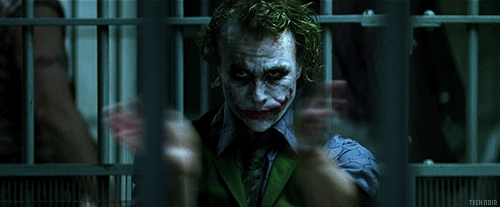-
Posts
28,442 -
Joined
-
Last visited
Reputation Activity
-
 minibois got a reaction from WhitetailAni in USB 3.0-A to USB 3.0-C
minibois got a reaction from WhitetailAni in USB 3.0-A to USB 3.0-C
Resistors are required in all USB Type C communication, not just in C to C cables.
In a C to C cable you just have a wire running from the source (PC, laptop, etc.) CC to sink (keyboard, camera, etc.) CC pins, which decides the orientation, as well as the speed and power levels. When you use a USB Type C to A cable, your cable needs to have a resistor on it and the sink device needs two resistors.
I'll reference information found in the USB Type C specification from the USB IF: https://www.usb.org/sites/default/files/USB Type-C Spec R2.0 - August 2019.pdf
Section 3.5.1 is the most relevant here, which describes how a USB 3.0 Type C to Type A cable should be made.
Note 2 goes over the required resistor in this cable:
Referring to the section 4.5.3.2.2, it shows two resistors (on CC1 and CC2) tied to GROUND are needed in the sink device (camera).
Furthermore, I think I need some more information on the USB Type C receptacle you're using in the USB camera. This needs to have those two resistors tied to GROUND on CC1 and CC2, but also needs some technology on the inside to detect if it should send USB 3.0 signals through the left or the right two data pairs.
While USB 2.0 pins can be connected together on the PCB (as shown below), USB 3.0 requires some extra technology on the sink device side (the camera), to decide if it should send signals through the left or right data pair.
This is what a USB Type C connector footprint looks like on a PCB. The red boxes show that the USB 2.0 data pair (D+ and D-) are connected together, so it doesn't matter if you plug in the cable upside-down or right-side up ('flipped' and 'un-flipped' respectively), because the USB 2.0 pins go to the right place regardless.
As we can see in the USB Type C receptacle and plug:
USB 2.0 should be connected, regardless of orientation (connector A7 and A6 either go to receptacle A6 and A7 or B6 and B7), but with USB 3.0 you're either going to use the left or right pair and the sink device (camera) needs to be able to switch the USB 3.0 data pairs from the left to the right side depending on how the CC pins are connected.
This is why it's also so weird why USB 2.0 only works when plugged in one way, because the cable connector should always connect to a D+/D- pair on the receptacle; whether it be the top or bottom two doesn't matter.
The only reason I can think of why it doesn't work is either:
- the receptacle in the camera only has the data pair at the top or bottom (instead of both top and bottom)
- GROUND is only connected when plugged in with one orientation, as it appears from the breakoutboard datasheet the GROUND connections aren't all connected together, but that should be easy to test with a multimeter
So in short:
- You need a 56 k Ohm resistor between CC and VBUS on the cable
- You need two 5.1 k Ohm resistors, between CC1 and GROUND & CC2 and GROUND
- You need to check if your breakoutboard GROUND connections are all connected together
- You need to check the receptacle in the camera if it has USB 2.0 on both the top and bottom as well as needing to check if it actually has the functionality needed to switch between the left/right USB 3.0 data pairs (depending on orientation)
The USB Type C specification is quite a bit more complex than previous USB standards, so there is a lot that goes into even just making a simple cable.
I hope this post gave you some information on what to look into, to get your mod working.
-
 minibois got a reaction from K_Jones_94 in USB 3.0-A to USB 3.0-C
minibois got a reaction from K_Jones_94 in USB 3.0-A to USB 3.0-C
Did you follow the length variance specification on USB 3.0 cables?
While USB 2.0 isn't that specific on having equal length differential pairs, the data pairs in USB 3.0 - because of its high speeds - can't have too much variance in it. Only a couple mm per pair, if my memory serves me right.
Twisting wires together would definitely create variance in data pair cable lengths and things like soldering them together/connecting through a terminal block can still have variance as well.
-
 minibois got a reaction from IAmAndre in Which SODIMM ram is faster? 3000-cl16 VS 3200-cl20 (zen3 mobile 5900hx)
minibois got a reaction from IAmAndre in Which SODIMM ram is faster? 3000-cl16 VS 3200-cl20 (zen3 mobile 5900hx)
You can divide the Mhz by the CL to get an idea of real world speed, higher is better.
3000Mhz CL16 = 187.5
3200Mhz CL20 = 160
I forgot what the number to divide it was, but you can get the true latency in ns from these numbers too.
This was the calculator I used: https://notkyon.moe/ram-latency.htm
3000Mhz CL16 = 10.67 ns
3200Mhz CL20 = 12.5 ns
It's pretty difficult to directly relate this to real world performance though, the best that can be done is looking at some benchmarks for Ryzen CPU's with different memory speeds and latencies and you will see lower Mhz/CL (or real world speed) = lower performance.
By how much depends on the specific task.
-
 minibois got a reaction from Eschew in USB 3.0-A to USB 3.0-C
minibois got a reaction from Eschew in USB 3.0-A to USB 3.0-C
Did you follow the length variance specification on USB 3.0 cables?
While USB 2.0 isn't that specific on having equal length differential pairs, the data pairs in USB 3.0 - because of its high speeds - can't have too much variance in it. Only a couple mm per pair, if my memory serves me right.
Twisting wires together would definitely create variance in data pair cable lengths and things like soldering them together/connecting through a terminal block can still have variance as well.
-
 minibois reacted to Rauten in Game over man, game over! - Sega shuts down arcade business
minibois reacted to Rauten in Game over man, game over! - Sega shuts down arcade business
Not just the controls; arcades could be kind of community centers for kids/teens in the area.
Friendships could be made on those places.
Hell, arcades were the beginning of the fighting game community and all the tournaments around it nowadays.
Oh, I spent a fair amount of pesetas on the Crazy Taxi machine in a local arcade that used to be close to my childhood home. Man, I loved hammering the gear stick on it.
-
 minibois got a reaction from K_Jones_94 in USB 3.0-A to USB 3.0-C
minibois got a reaction from K_Jones_94 in USB 3.0-A to USB 3.0-C
Resistors are required in all USB Type C communication, not just in C to C cables.
In a C to C cable you just have a wire running from the source (PC, laptop, etc.) CC to sink (keyboard, camera, etc.) CC pins, which decides the orientation, as well as the speed and power levels. When you use a USB Type C to A cable, your cable needs to have a resistor on it and the sink device needs two resistors.
I'll reference information found in the USB Type C specification from the USB IF: https://www.usb.org/sites/default/files/USB Type-C Spec R2.0 - August 2019.pdf
Section 3.5.1 is the most relevant here, which describes how a USB 3.0 Type C to Type A cable should be made.
Note 2 goes over the required resistor in this cable:
Referring to the section 4.5.3.2.2, it shows two resistors (on CC1 and CC2) tied to GROUND are needed in the sink device (camera).
Furthermore, I think I need some more information on the USB Type C receptacle you're using in the USB camera. This needs to have those two resistors tied to GROUND on CC1 and CC2, but also needs some technology on the inside to detect if it should send USB 3.0 signals through the left or the right two data pairs.
While USB 2.0 pins can be connected together on the PCB (as shown below), USB 3.0 requires some extra technology on the sink device side (the camera), to decide if it should send signals through the left or right data pair.
This is what a USB Type C connector footprint looks like on a PCB. The red boxes show that the USB 2.0 data pair (D+ and D-) are connected together, so it doesn't matter if you plug in the cable upside-down or right-side up ('flipped' and 'un-flipped' respectively), because the USB 2.0 pins go to the right place regardless.
As we can see in the USB Type C receptacle and plug:
USB 2.0 should be connected, regardless of orientation (connector A7 and A6 either go to receptacle A6 and A7 or B6 and B7), but with USB 3.0 you're either going to use the left or right pair and the sink device (camera) needs to be able to switch the USB 3.0 data pairs from the left to the right side depending on how the CC pins are connected.
This is why it's also so weird why USB 2.0 only works when plugged in one way, because the cable connector should always connect to a D+/D- pair on the receptacle; whether it be the top or bottom two doesn't matter.
The only reason I can think of why it doesn't work is either:
- the receptacle in the camera only has the data pair at the top or bottom (instead of both top and bottom)
- GROUND is only connected when plugged in with one orientation, as it appears from the breakoutboard datasheet the GROUND connections aren't all connected together, but that should be easy to test with a multimeter
So in short:
- You need a 56 k Ohm resistor between CC and VBUS on the cable
- You need two 5.1 k Ohm resistors, between CC1 and GROUND & CC2 and GROUND
- You need to check if your breakoutboard GROUND connections are all connected together
- You need to check the receptacle in the camera if it has USB 2.0 on both the top and bottom as well as needing to check if it actually has the functionality needed to switch between the left/right USB 3.0 data pairs (depending on orientation)
The USB Type C specification is quite a bit more complex than previous USB standards, so there is a lot that goes into even just making a simple cable.
I hope this post gave you some information on what to look into, to get your mod working.
-
 minibois got a reaction from Eschew in USB 3.0-A to USB 3.0-C
minibois got a reaction from Eschew in USB 3.0-A to USB 3.0-C
Before I comment on this, I want to ask a few questions first, just so I know I have the right information.
From what I understood, you changed a USB 3.0 A port on a device to a USB Type C port? Is that the digikey part? And you also put a USB type C plug on a cable?
Can you just provide a little bit more detail on what you exactly exchanged for USB Type C?
Also, did you use any resistors in relation to the USB Type C plugs?
-
 minibois got a reaction from Eschew in USB 3.0-A to USB 3.0-C
minibois got a reaction from Eschew in USB 3.0-A to USB 3.0-C
Can you show a picture of the breakout board you used?
And just two simple questions:
- Are you sure the cable is USB 3.0 (has the TX/RX data pairs)
- Does it act differently if you rotate the USB type C cable (plug it in 'upside-down' compared to how you plugged it in previously)
-
 minibois got a reaction from Eschew in Game over man, game over! - Sega shuts down arcade business
minibois got a reaction from Eschew in Game over man, game over! - Sega shuts down arcade business
While in the past arcade games were truly better than their home console counterparts, today we fortunately are able to play the best games on our PC's and consoles. What sets an arcade apart from simply the home experience was the different types of control options.
I haven't been to many arcades, but one I did go to had quite a few machines, but my favorite was definitely the Crazy Taxi (a SEGA game!) cabinet, which had a small wheel and one of those "lean bars" behind you.
Crazy Taxi is certainly in my top 10 favorite games and I love playing it with a controller, but playing it in an arcade with such a different control setup is really cool.
Arcades have become a thing of the past, but it's still sad to see a part of gaming history disappear in front of my eyes.
-
.png) minibois got a reaction from whm1974 in Game over man, game over! - Sega shuts down arcade business
minibois got a reaction from whm1974 in Game over man, game over! - Sega shuts down arcade business
While in the past arcade games were truly better than their home console counterparts, today we fortunately are able to play the best games on our PC's and consoles. What sets an arcade apart from simply the home experience was the different types of control options.
I haven't been to many arcades, but one I did go to had quite a few machines, but my favorite was definitely the Crazy Taxi (a SEGA game!) cabinet, which had a small wheel and one of those "lean bars" behind you.
Crazy Taxi is certainly in my top 10 favorite games and I love playing it with a controller, but playing it in an arcade with such a different control setup is really cool.
Arcades have become a thing of the past, but it's still sad to see a part of gaming history disappear in front of my eyes.
-
 minibois reacted to Rauten in Game over man, game over! - Sega shuts down arcade business
minibois reacted to Rauten in Game over man, game over! - Sega shuts down arcade business
As a kid/teen who grew up with SEGA, this hits me in the feels.
I fully understand why, the business has been dying for a while, and the pandemic hasn't helped one bit, but still hurts; SEGA were a goddamn arcade monster back in the day.
Alexa, play the Daytona USA anthem
-
.png)
-
 minibois got a reaction from Spotty in Could you help create a pcb for me
minibois got a reaction from Spotty in Could you help create a pcb for me
Many hours go into designing a PCB - and prototyping it if it's an unproven design. Same goes for the schematic behind it.
What kind of schematic design do you have created at the moment? What kind of experience do you have with analog and digital electronics?
I've designed some PCB's in the past and it's honestly not that hard, if you have a proven design (specifically schematic) you can work from. If you have some trouble starting up the project, I can give some tips and pointers; but if you want a fully custom designed PCB you'd really need to look into commisioning a professional or learn all the needed information yourself.
By the way, you've posted this thread in off-topic, which is meant for non-tech related content. I've moved this thread to Hobby Electronics, where people most familiar with this subject (custom electronics projects and PCB's) would be most likely to look.
-
 minibois got a reaction from Eschew in Could you help create a pcb for me
minibois got a reaction from Eschew in Could you help create a pcb for me
Many hours go into designing a PCB - and prototyping it if it's an unproven design. Same goes for the schematic behind it.
What kind of schematic design do you have created at the moment? What kind of experience do you have with analog and digital electronics?
I've designed some PCB's in the past and it's honestly not that hard, if you have a proven design (specifically schematic) you can work from. If you have some trouble starting up the project, I can give some tips and pointers; but if you want a fully custom designed PCB you'd really need to look into commisioning a professional or learn all the needed information yourself.
By the way, you've posted this thread in off-topic, which is meant for non-tech related content. I've moved this thread to Hobby Electronics, where people most familiar with this subject (custom electronics projects and PCB's) would be most likely to look.
-
 minibois got a reaction from GuiltySpark_ in Bent Motherboard. . . pins?
minibois got a reaction from GuiltySpark_ in Bent Motherboard. . . pins?
You mean those two pins in the middle of the picture? (usually when I hear "bent pins" and "motherboard" in the same sentence my mind goes to socket pins)
That is sometimes done to keep the part in place when it's soldered, it doesn't impact the functionality of the board.
-
 minibois got a reaction from Eschew in Bent Motherboard. . . pins?
minibois got a reaction from Eschew in Bent Motherboard. . . pins?
You mean those two pins in the middle of the picture? (usually when I hear "bent pins" and "motherboard" in the same sentence my mind goes to socket pins)
That is sometimes done to keep the part in place when it's soldered, it doesn't impact the functionality of the board.
-
 minibois reacted to GuiltySpark_ in Bent Motherboard. . . pins?
minibois reacted to GuiltySpark_ in Bent Motherboard. . . pins?
Those are just through hole connection point pins for a component on the other side of the board. Its how its attached. Completely normal.
-
 minibois got a reaction from Eschew in Soldering Iron Recommendations
minibois got a reaction from Eschew in Soldering Iron Recommendations
For a project like this you probably need a relatively simple iron. Personally I usually recommend one with temperature control, so it's not just "turned off or full blast", but so you have some control over it.
I use the Hakko FX-888D, which is a great iron, but also quite expensive if you're not planning to do multiple projects with it.
What I often see recommended online is the KSGER T12, which is a much more budget iron, which still possesses temperature control and even comes with multiple tips so you have some different sizes for different jobs.
Other than an iron, you will want some rosin core soldertin (usually leaded solder is recommended, because it's easier to work with) and a simple flux pen would be recommended too, as flux helps the solder flow to the pads (and away from everything else).
So with an iron, rosin core solder and a flux pen you would good to go (of course in addition to all the components and cables needed for the mod itself).
-
 minibois got a reaction from Eschew in What refresh rate does PC video games have?
minibois got a reaction from Eschew in What refresh rate does PC video games have?
Because games often update and so do things like graphics drivers, it's difficult to definitely give an fps number you can expect in each given game.
The best you can do is look up benchmarks of your graphics card (since the CPU doesn't contribute much to the games beyond a certain point) and see what kind of fps you can expect.
With monitors there is a lot of variables to consider, like the refresh rate (Hz), but also the resolution, color accuracy, etc. desired.
With a 2080 Ti I think 1440p 144Hz or 1080p 240Hz can both certainly make sense, but it really depends on the games you play. A game like CS:GO will more easily get very high fps, where as something like Call of Duty is much more demanding of your graphics card.
-
 minibois got a reaction from Eschew in What refresh rate does PC video games have?
minibois got a reaction from Eschew in What refresh rate does PC video games have?
This website has many games listed and often their fps cap (if applicable) listed too: https://www.pcgamingwiki.com/wiki/Home
Games with a capped fps are uncommon, unless you turn on vsync; in which case it's limited to the refresh rate of your monitor (the way vsync caps fps is undesirable though, so it's not recommended to use).
-
.png) minibois got a reaction from TheCoder2019 in I say Hi here
minibois got a reaction from TheCoder2019 in I say Hi here
while(true){ printf("Hello! Welcome to the forum!"); }
-
.png) minibois got a reaction from Middcore in Name of this case
minibois got a reaction from Middcore in Name of this case
The Silverstone RL06, it says so in the bottom left corner of the video.
-
 minibois got a reaction from Slottr in Name of this case
minibois got a reaction from Slottr in Name of this case
The Silverstone RL06, it says so in the bottom left corner of the video.
-
 minibois reacted to Lurick in Broken CPU or Pins?
minibois reacted to Lurick in Broken CPU or Pins?
Looks like some thermal paste or something is on the CPU pads. Do you have any rubbing alcohol (92% or higher) that you can use on those pads?
-












